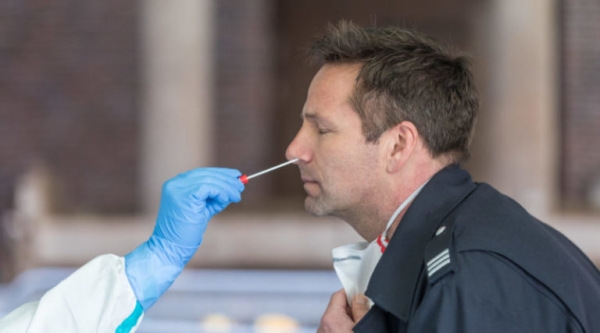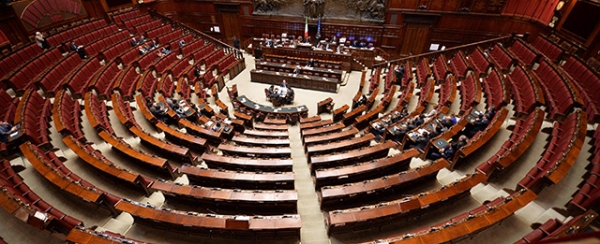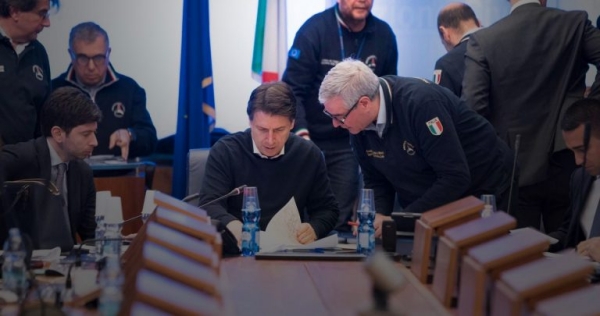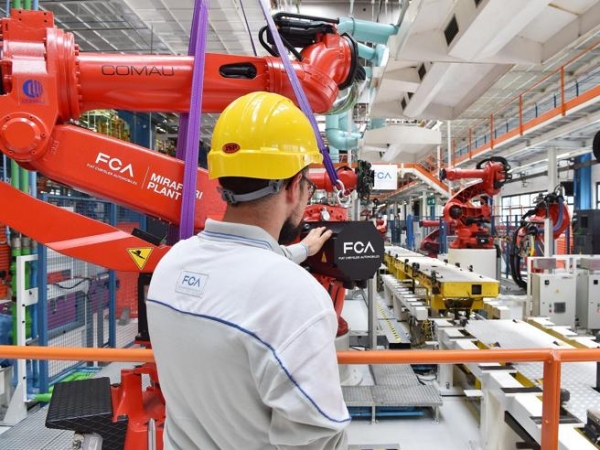Coronavirus, Italian schizophrenia
Unsurprising, yes. But very weird to live in.
What keeps me writing about Coronavirus in Italy remains [what it was when I started, six months ago]: the tought of its effects on people, in Italy or any other country, after the COVID19 pandemic is over.
Mixed signals for travelers (and everybody else)

Back in July, Sardinia was more or less COVID-free. In August, it became a significant source of contagions for all the rest of Italy, and continued to be so until early September. As a result, starting today source of contagions people arriving on the island are “invited” to bring certificates they are COVID-negative, or to self-certify the same thing. The alternative should be to have a tampon withing 48 hours, remaining in isolation until the result arrives (which could be days).
Saturday evening, two days ago, a friend of mine landed in Fiumicino Airport, back from a business trip to Sardinia, expecting the same treatment, for the same reason. The medical staff of the airport told him that “after 6pm we do tampons only for people coming from Cyprus, Greece and other foreign countries. You may leave, no problem, have a nice evening”.
This is just an anecdote, but good for opening the post. We are definitely getting mixed signals here. At ALL levels. Hearing everything and the opposite of everything, knowing that it may change every moment.
Professional sport is nervous. Very nervous

<u><em><strong>CAPTION:</strong>
<a href="https://www.ilgazzettino.it/nordest/treviso/coronavirus_calcio_calciatori_contagiati_chi_sono-5456255.html" target="_blank">How many of those professional players may be training, while infected? (click for source)</a>
</em></u>
Allegedly, soccer players, managers, sponsors and bookmakers are quite stressed by starting a season where every match, ranking, strategy, advertising contract… may be aborted, or turned upside down with just hours notice, because some top-tier player is found positive.
Imagine such a player being told that he’s positive, one or two days before a key. If he informs coach and team right away, he jeopardizes everybody’s season, if not careers. If he waits until Monday afternoon to say “hey guys, bad news, sorry”, he may infect half the team… and still lose the match, because playing with such a thought in mind could hardly be good. Quite a scenario, and a very likely one.
Politics goes by, undebated

An empty Italian Chamber of Deputies
</em></u>
Italy still is a parliamentary republic. It is just one that, since the beginning of the lockdown, has been de-facto ruled by the executive, much more than its Parliament. On July 30th, this preminence was confirmed by extending the status of national emergency until October 15th, and it would be hard to deny that we are out of the emergency. Fact is, since the beginning of that status in March, nationwide COVID19 actions have been regulated by 345 decrees, but Parliament was involved in less than 10% of them.

Prime Minister Conte, in the situation room
</em></u>
One of the consequences of this situation is too much confusions on many critical matters. One of the things that prevent a real social disaster here, much worst than everything happened so far, is a government-imposed nationwide prohibition to most companies to lay off employees with permanent contracts. This rule was issued in March, there still is way too much confusion on its interpretation, with serious risks of denounces and trials for errors and abuses, going on for years.
Schizoprenia in urban transit
In order to cope with the transit logistics of students going back to school today, some local administrators suggested (I am serious) “vertical distancing”, that is: let’s re-allow full capacity on buses and subways, but telling passengers (many of which would be teenagers) to stand up, don’t look at each other, and only breathe on the buses/wagons windows, not on each other’s faces.
Other towns are speaking of mandatory masks, on buses traveling with open windows even in winter, in order to disperse virus particles outside, better than any filter may ever do.
National medical bulletin? Not bad, just stressing. Fingers crossed
What is reassuring, in this socioeconomic minefield, is the concrete probability that, as far as gettings sick is concerned, things may never be so bad as they were in March, when ICUs were bursting at the seams, and some crematoriums in Lombardy could not keep up with demand.
In this mid-September of 2020, Italy is “a different country than what it was in March”, primarily for these reasons:
- While the trend is not decreasing, there have been only 32 contagions per 100K residents in the last fourteen days, according to the european Center for Disease Control. Second only to Germany (21/100K), and much better than Spain (263/100K). Not that this is a contest, of course!
- Italy makes almost three times more tampons than one month ago and has, masks are used (never enough but they are, at least indoor), and all hospitals now are organized to handle COVID19 patients in the best possible way, separating them as soon as they arrive from the others.
- There are almost 9K ICU beds, against the 5K of last spring, and plans to set up extra mobile hospitals, including military ones if needed.
- In the middle of the lockdown we had, on average, 30K tampons per day, and up to 4K new cases every day, 50% of which were sick, or showing significant symptoms. Last week 94K tampons found only 1600 new cases, 90% asymptomatics. OK, that was before school reopening and the change of season, but it is good, isn’t it?
All this should mean that another national lockdown as in March can be excluded, unless the virus radically changes. The price to pay is the almost certainty that, for the same reasons above, there will be many “micro-lockdowns”, scattered all over the country in unpredictable places and moments, until at least next spring.
All the (hopefully early) discoveries of clusters of infection inside single schools, companies or public offices, will shut down for a week or two not just those places but, of course, all their “dependencies” too, i.e. the families of students, teachers, employees… The awareness that we are “having our lives back”, but with plenty of kill switches is spreading, and we will know how it has changed us only next year.
Why people do not go into restaurants

One of my relatives just called to advise me to avoid a certain restaurant because “I just saw their waiters practically breathe right onto towels and plates, while setting up tables”. This, in a place that should take temperatures and names of every incoming patron: mixed signals, again. To be polite.
Many restaurants follow the rules, of course. I should go to a silver wedding dinner this week, and the spouses are behind schedule because of complicated seating alone is. Personally, I am told that I will seat at the same table, which could host eight or ten people, with only four others: the priest who celebrated the wedding, me and my wife, and two uncles of mine.
BUT: only co-living people can sit at less than one meter from each other. So there will be three well distinct “nucleuses”, as far from each other as possible, around my table: me and my wife, the uncles, and the priest. Distanced musical chairs.
How much is the cost of repeating this exercise for every table of every party? I have no idea, but it likely does not really matter. Both that complexity and fear of others' carelessness are much less powerful than the status of wallets, in every corner of the country. Quoting at random from recent news, one every three Italians is struggling to get out of whatever “comfort zone” they had managed to find during the lockdown, and “will have serious economic problems”. In additions to the ones many already had in 2019, of course.

The FIAT/FCA plant in Mirafiori, NOT working as usual
</em></u>
People looking for a job are sending so many digital curricula that those files have become excellent carriers of malware, growing 20% per week. Fourteen per cent of the non-profit sector of Tuscany is shutting down. Since January, the historical FIAT/FCA plant of Mirafiori has produced only 8K cars, versus 218K in 2016).
CNN seemed to discover only last week what was evident, if you were reading my own reports, since about May, that is the “tourism catastrophe looming on Italy”: “70% of hotels in cities like Rome and Florence and 20% in coastal areas never even reopened after the lockdown. The Italian National Institute of Statistics projects that 60% of businesses in the industry fear imminent collapse”.
Debt: all over the place, at all levels.
All I have written here is why I titled this post “Italian schizophrenia”. There are multiple personalities Italy working and feeling in Italy now, from the country to the individual level.
Everything and its opposite may happen, and the only thing sure is that both cases will require money. Whether that money will come or not, and from where, is unclear.
Looking beyond borders does not help. At the beginning of 2021 Italy will declare to Bruxelles how it plans to use its share of the COVID19 Recupery Fund (up to 209B Euros): the requests received right now would need more than three times the money, that is 677B Euros. In the background, COVID19 has “created a worldwide debt detonator”, and “it does a feel a bit as though markets got drunk on easy money and are waking to a hangover, geo-politics, and policymakers' nervousness about the size of the debt load they’ve taken on".
Images sources:
Who writes this, why, and how to help
I am Marco Fioretti, tech writer and aspiring polymath doing human-digital research and popularization.
I do it because YOUR civil rights and the quality of YOUR life depend every year more on how software is used AROUND you.
To this end, I have already shared more than a million words on this blog, without any paywall or user tracking, and am sharing the next million through a newsletter, also without any paywall.
The more direct support I get, the more I can continue to inform for free parents, teachers, decision makers, and everybody else who should know more stuff like this. You can support me with paid subscriptions to my newsletter, donations via PayPal (mfioretti@nexaima.net) or LiberaPay, or in any of the other ways listed here.THANKS for your support!